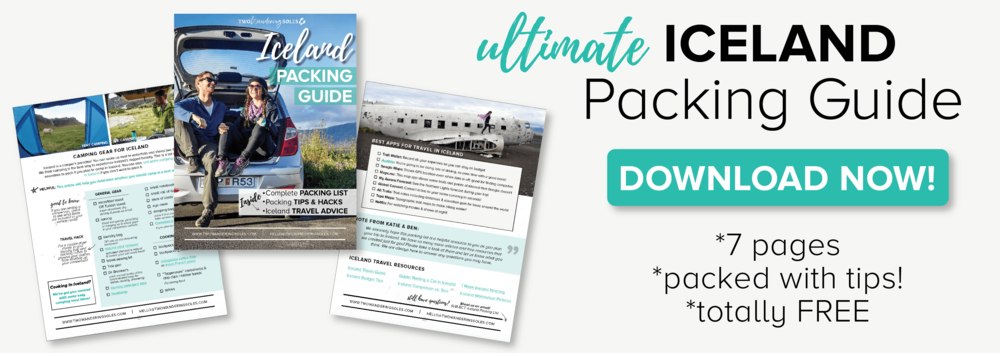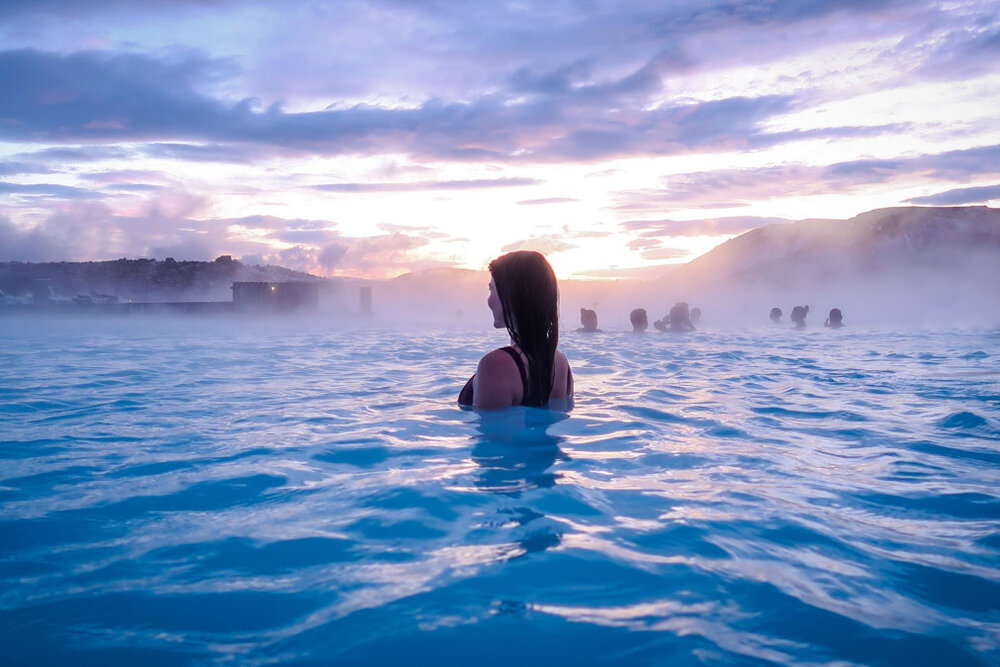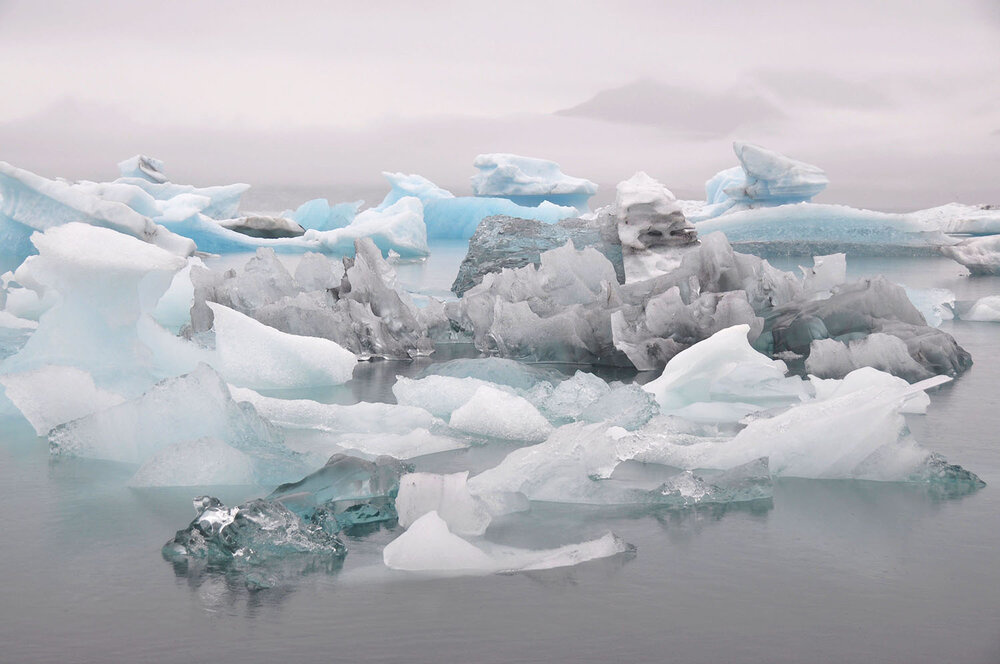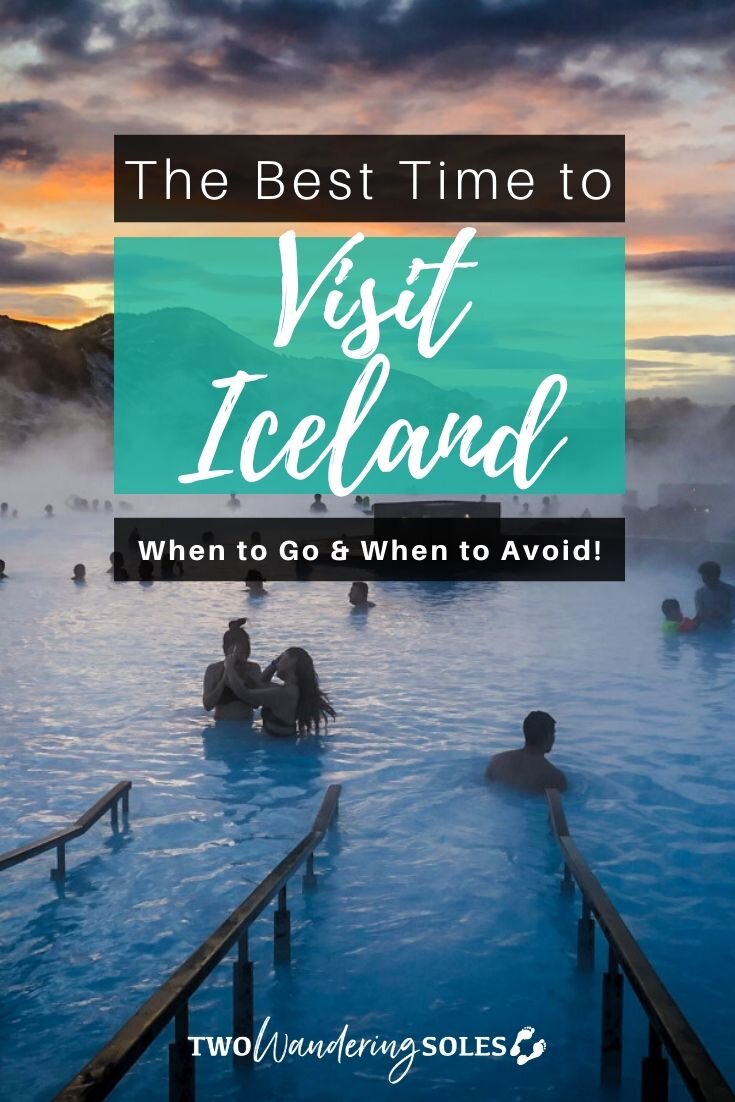
Iceland boasts a much milder climate than its name suggests. However, it still experiences 4 distinct seasons, each with its own unique draw for visitors.
Youll see migrant birds returning to the coastal areas during the spring, hiking, whale watching and music festivals draw crowds in the summer, autumn brings with it the best time for Northern Lights viewing, and powdery snow covers the land for epic snow activities come wintertime.
So this begs the question
What time of year is best to visit Iceland?
In short, youll have the best chance of comfortable weather and fewer crowds in in autumn. Your best chance of viewing the Northern Lights is in winter. Bird-watching and fishing season begins in the springtime and all of Icelands famous hiking trails are accessible during the summer.
Truthfully, as you could probably guess, there is no correct answer. The best time to visit Iceland might be different depending on what kind of traveler you are and what you hope to do and see while youre there.
Each season has its own unique draws (and drawbacks too).
Were going to go over the pros and cons of visiting Iceland during each season to help you decide which time of year is ideal for YOU.
Answer these questions to get started:
Do you mind cold weather?
Are you planning to road trip around Iceland?
Are you hoping to get a glimpse of the Northern Lights?
Or do you prefer to spend time outdoors hiking?
What kind of wildlife are you hoping to see?
Do the daylight hours affect your sleep, either not having enough light or having too much light?
Thinking about your answers to these questions is going to help you start to determine when to visit Iceland.
Best time to visit Iceland article contents
Jump to the section you are looking for, or just scroll down the page.
Iceland Geography Overview

Located just below the arctic circle and situated on one of the earths hot spots, Iceland has lots of geothermal activity including hot springs, geysers, mud pools, volcanos, and the occasional earthquake.
Its one of the few places on earth where two tectonic plates meet on the earths surface (as opposed to under the water). In fact, Iceland is actually being pulled apart by the Eurasian and the North American plates. This is creating a massive divide that runs through the center of the country. At ingvellir National Park, you can actually go diving or snorkeling in the Silfrafissure between the 2 continents.
Sitting on top of a volcanic plateau, the vast majority of the country is an arctic desert. Glaciers cover over 11.5% of the country (4,600 sq miles!).
The rest of topography across the country varies from mountains and lava fields to black sand beaches and fjords, with lots and lots of waterfalls dotted in between. Most of the vegetation and agriculture is in the lowlands near the coast.
Weather in Iceland

Thanks to the warming affects of the Gulf Stream, Iceland has a temperate climate year round. The country experiences cool summers and mild winters where the temps rarely drop much below freezing.
However, Iceland is infamous for its unusually volatile shifts in weather. It is not uncommon to experience all four seasons in one day. This is because the Gulf Stream brings mild Atlantic air (all the way from the Caribbean) in contact with the chilly Arctic air, which causes sudden and frequent shifts in the weather.
There is a popular saying with the locals you are sure to hear while visiting Iceland that says, If you dont like the weather, just wait 15 minutes.
Precipitation peaks from October - February with the southern and western parts of the country receiving the most rainfall.
Wind is also a big factor of the weather in Iceland.
Stats on Iceland Weather & Seasons:
Warmest month in Iceland: August
Coldest month in Iceland: February
Rainiest month(s) in Iceland: Oct - Feb
Driest month(s) in Iceland: Jun - Jul
Most crowded month(s) in Iceland: Jun - Aug
Least crowded month(s) in Iceland: Nov - Feb
Summer in Iceland

Summer just below the arctic circle means long daylight hours and warmer temperatures. The midnight sun sheds 24 hours of daylight on the land surrounding the summer solstice in June. Meadows turn bright green and livestock roams the countryside.
Highland roads open up after being closed all winter. This makes summer the best time for serious hikers to visit as all the famous trails that will be accessible.
The best months for whale watching are June & July. The north enjoys visits from humpbacks, minkes and dolphins from May - August and a few humpbacks even stick around until the end of the year. Blue whales are spotted passing through in June.
Summer is also Icelands peak tourism season and travelers should look at booking well in advance to secure accommodation, tours and transportation.
Summer months at a glance:
June: Summer solstice is on June 21, the longest day of the year in the northern hemisphere. This is the start of busy season as temperatures are warming up and schools are going on break.
Average Daylight Hours in June: 20-21 hours
July: Peak tourism season and probably the busiest month in Iceland. July also sees the warmest temperatures andbest weather.
Average Daylight Hours in July: 21-18 hours
August: The weather is still warm and tourism booming during August, although the days are getting slightly shorter.
Average Daylight Hours in August: 18-15 hours

Best places to visit in the summer in Iceland
Valley of Landmannalaugar - only accessible during the summer or by tour during the winter
rsmrk Valley - also only accessible during summer
Silfra fissure for diving/snorkeling
Seljalandsfoss Waterfall at Sunset - best seen on a clear day during golden hour
Slheimasandur Plane Crash - go during after hours with the midnight sun to avoid the crowds
Moss-covered lava fields
Fjarrgljfur: Grassy Canyon Valley
Jokularson Glacier Lagoon
Best things to do in the summer in Iceland
Hiking the Icelandic highlands: Laugavegurinn and Fimmvruhls (accessible only during July and August)
River rafting
Chasing waterfalls - the Golden Circle is a good place to start
Whale watching
Midnight golfing - its a thing, look it up!
Sjomannadagurinn (Seamans' Day) on the first weekend of June celebrates the importance of fishing to Icelandic life.
Culture Night - August in Reykjavk
Secret Solstice Music Festival - June in Reykjavk
Trying to figure out how to fit it all into one week? Weve put together the perfect Iceland itinerary for 1 week of travel in this nature-lovers paradise.

Summer is the best time to visit Iceland if
you dont mind crowds too much.
you want plenty of daylight and warmer temperatures.
you want to do lots of hiking in the highlands.
you want to experience the midnight sun.
you can make your bookings well in advance.
What to pack for Iceland in the summertime
hiking boots
activewear
hiking pants or rain pants
warm layers
wind and water proof jacket
backpack with a rain cover
swimwear
sunscreen

What to Pack for Iceland
Packing for a trip to Iceland is tough (the weather changes all the time!). But don't worry, we've got you covered with a super detailed packing list so you know exactly what to bring.
Plus, we're sharing tons of packing hacks and tips for traveling in Iceland that you won't find anywhere else.
We spent hours creating this super helpful PDF just for you.
Enter your email below and well immediately send the packing list to your inbox (totally FREE).
We'll also be sending you bonus tips on all things Iceland: like how to find cheap flights, how much things cost in Iceland and how to choose thebest accommodation style for you!
We value you, and NEVER spam. (We hate spam too.)
Thank you!
You have successfully joined our subscriber list.
Autumn in Iceland

With autumn in Iceland comes cooler temperatures and the beginning of Northern Lights viewing season. While Iceland doesnt experience the changing of the leaves like other parts of the world, moss growing on volcanic lava formations gives nature an added splash of fall color.
September and October are the best months to check out the hot springs and hidden hot pots around Iceland as the mountain roads are usually still open, but the crowds have dwindled significantly.
Autumn experiences similar temperatures to the spring in Iceland, but may feel windier in comparison. However, the daylight hours are still pretty normal, so this shoulder season makes for a good time to visit without as much crowds.
Autumn months at a glance:
September: Temperatures are still fairly warm in September, and most of the crowds have thinned as children return to school.
Average Daylight Hours in September: 15-12 hours
October: Its starting to get colder during the second half of the month as we get into full shoulder season where crowds have dwindled. You might even see the first snowfall this month.
Average Daylight Hours in October: 12-8 hours

Best places to visit in autumn in Iceland
Blue Lagoon
Myvatn Nature Baths
Thingvellir National Park - bathed in color!
Most popular waterfalls: Dettifoss, Gullfoss, Seljalandsfoss, Svartifoss, Skogafoss, and Goafoss
Best things to do in autumn in Iceland
Catch a glimpse of the Northern Lights - best seen in Sept & Oct during the fall
Drive the Golden Circle
Road trip Ring Road around the entire country
Witness a roundup - when the farmers start to gather their sheep and horses in for the winter
Eve Fanfest - April in Reykjavk
Reykjavk Film Festival - September
Thinking about renting a car to do a roadtrip? Check out our ultimate guide to renting a car in Iceland to find all the info youll need!

Autumn is the best time to visit Iceland if
you are seeking hot springs and hot pots around the country.
you are hoping to catch a glimpse of the Northern Lights.
you prefer less crowds.
you enjoy cool and crisp air.
you want to plan a road trip around Ring Road.
What to pack for Iceland in the fall:
rain and windproof jacket
a scarf, hat and mittens/gloves
thermal layers
warm socks
hiking boots
swimwear
Winter in Iceland

Contrary to its name, winters are remarkably mild in Iceland. The winter weather is said to be comparable to Hamburg or NYC. Snow can fall from October through April, but rarely stays on the ground for more than a few days.
The Northern Lights are best seen in the wintertime when there are long, dark nights. But it is important to keep in mind that they are still quite illusive and you shouldnt plan your trip to Iceland solely for Northern Lights, or you might wind up disappointed.
Lack of daylight from November through January is a complication for photographers and outdoor adventure seekers. However, the low angle of the sun in December casts the golden hour effect on the snow-covered landscapes and makes for excellent photographs.
Road conditions can be a bit treacherous during winter, and many highlands roads are closed, which means this is not a good time for road tripping.
Orcas can be spotted in West Iceland along the Snaefellsnes peninsula during the first half of the year, peaking in February and March.
Winter months at a glance:
November: The days are getting shorter as the winter solstice approaches. Winter activities such as snowmobiling and glacier hiking are becoming quite popular.
Average Daylight Hours in November: 8-5 hours
December: December is the peak of winter solstice which means the darkest/shortest days of the year in the northern hemisphere. There can be as little as 4-5 hours of daylight in Iceland during December.
Average Daylight Hours in December: 5-4 hours
January: New Years celebrations kick off the start of the year in January. The days are once again beginning to get longer, and the Icelandic people do not let the cold stand in their way of participating in all sorts of outdoor activities in the snow.
Average Daylight Hours in January: 5-7 hours
February: Iceland is covered in a white blanket of snow making this a beautiful time of the year to explore some of the natural wonders. Northern Lights viewing is best during February and March.
Average Daylight Hours in February: 7-10 hours
March: Still wintertime in Iceland, March is another great month for viewing the Northern Lights. The daylight hours begin to increase and the locals are getting ready for spring.
Average Daylight Hours in March: 10-14 hours

Best places to visit in the winter in Iceland
-
Snaefellsnes Peninsula for orca sighting
Kirkjufellsfoss waterfall
Strokkur geyser - erupts every 10 minutes and you can really feel the heat in the wintertime
Gullfoss Falls - In the winter, Icelands iconic rocky fields become flat white sheets and the falls themselves form icy chunks at the edges.
Svinafellsjkull Glacier
Glacial Ice Caves
Wondering how you can afford to see everything there is to see while staying on budget? Weve got you covered with our money-saving tips for Iceland.
Best things to do in the winter in Iceland
Glacier Hiking
Snowmobiling
Viewing/photographing the Northern Lights - best seen in Feb & March during the winter
Horseback riding, outdoor swimming and other snow activities
Orca watching (Feb - March)
New Years Eve celebrations around Reykjavk
Winter Lights Festival - February in Reykjavk
Iceland Airwaves - November in Reykjavk

Winter is the best time to visit Iceland if
youre not a morning person (less daylight hours means the sun doesnt rise until almost mid-day!)
you dont mind colder temperatures.
you want to avoid the crowds.
you hope to view the Northern Lights.
you want to save money and travel during off-season.
What to pack for Iceland in the wintertime:
layers, including a warm winter jacket
winter boots
wool socks
a winter hat, mittens/gloves and a scarf
thermal underwear
swimwear
Spring in Iceland

The snow is melting and rain and wind are the primary weather patterns during the spring in Iceland. However, you will get the occasional clear and sunny day.
Temperatures start to warm up and nature comes back to life. Migrant birds, such as the puffin, start returning to the coastal areas and bird-viewing becomes a popular activity.
April through May is the spring shoulder season in Iceland. It is still possible to catch the Northern Lights, however, your chances of a good viewing are significantly decreased as the days get longer.
Wondering what to budget for a week in Iceland? Weve got you covered with our full Iceland budget breakdown.
Spring months at a glance:
April: Icelanders celebrate the official first day of summer on the first Thursday after the 18th of April, which is a public holiday. Although the weather will likely have you guessing its the first day of spring.
Average Daylight Hours in April: 14-17 hours
May: Ample daylight for sightseeing and temps are beginning to warm up. However, some of the roads remain closed as they are still thawing out from the winters snow and ice cover.
Average Daylight Hours in May: 17-20 hours

Best places to visit during spring in Iceland
Faxafli bay - puffin viewing in May
Jkulsrln Glacier Lagoon and Ice Beach
Reynisfjara Black Sand Beach - puffin spotting in May & summer
Best things to do during spring in Iceland
Fishing, whale watching and golf season begin
Bird-watching, particularly for Icelands beloved puffins
Vaka Folk Festival - May in Reykjavk
Aldrei For Eg Sudur music festival - April in Reykjavk
Eve Fanfest - April in Reykjavk

Spring is the best time to visit Iceland if
you want more normal daylight hours.
you want to do some bird watching.
you dont mind a bit of unpredictable weather.
What to pack for Iceland in the springtime:
winter boots or good walking shoes
wind and rainproof jacket
warm outter layers and a good jacket
a scarf, hat, and mitten/gloves
You might also like
Save this article on Pinterest for later!


We want to hear from you!
Are you planning a trip to Iceland sometime soon? When will you be traveling? Do you have any more questions you want answered?
Comment below and well do our best to get back to you with the answers you need!
